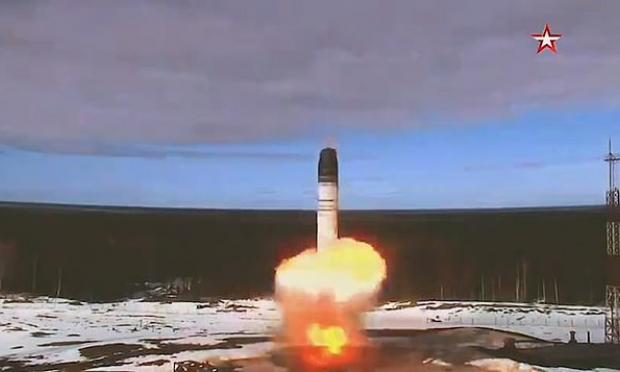Ukraine came under some of the heaviest shelling on Thursday, March 9, as Russia attacked targets across the country. Ukrainian defense forces said Russia had used hypersonic missiles in the attacks.
Officials in Ukraine said at least nine civilians were killed in rocket attacks in the capital Kiev and elsewhere, including the eastern city of Kharkiv and villages in the western region of Lviv.
Moscow has used hypersonic missiles before, in the early weeks of the war. They are considered a special type of missile.
Russia's hypersonic weapons
"Invincible". That's what Putin called hypersonic missiles in 2018 when he unveiled his country's missile arsenal.
It was perhaps a lofty description, designed for propaganda purposes, but there was an element of truth to it. Hypersonic missiles differ from conventional ballistic weapons in ways that make them more difficult to intercept by missile defense systems. It has to do with speed and altitude.
The term "supersonic" refers to missiles flying at speeds of mach 5 and above. At the time, many in the West dismissed Putin's claims as a bluff. Now we know he wasn't bluffing. Russia is the only country in the world that has ready-to-deploy hypersonic missiles, not one but three types: Zircons, Kinzhals and Avantguards.

These weapons are game changers in war. That is, in WW1, tanks were the game changer in military technology from WW2 where aviation was. Carrier strike groups were an unstoppable force wherever they traveled, dominating the seas ever since. But hypersonic precision missiles have rendered this force obsolete overnight.
ABM on the Polish-Romanian axis
The main military front in today's global conflict, according to a reputable media outlet, is the anti-ballistic missile systems (ABM) installed by the US on the Poland-Romania axis and the Russians on the North Pole-Kaliningrad-Crimea-Syria axis. These are defense systems designed to intercept incoming nuclear missiles. However, current ABM systems are only effective against missiles flying at speeds up to mach 3.5 (3.5 times the speed of sound).
Supersonic missiles fly five to ten times faster than the speed of sound. This is known as Mach 5 to Mach 10. There is no constant speed of sound because it depends on variables, namely the medium and the temperature of the medium through which an object or sound wave is moving.
Russia's new Kinzhal missile flies at speeds of mach 12 to 15 and nothing in western defense arsenals can stop it from hitting. During the war in Ukraine, Russia made a stunning display of its power.
The first Kinzhal strike, carried out a month after the start of hostilities in Ukraine, was perhaps the most significant: Russian forces targeted a large weapons depot in Ukraine that had been built to withstand a nuclear strike. It was buried 170 meters (over 500 feet) underground and protected by several layers of armored concrete.

The Kinzhal flies at altitudes between 20 and 40 km, with a maximum range of 2,000 km. When over the target, it dives vertically and accelerates to mach 15, gathering enormous kinetic energy in addition to its explosive charge. This first strike, with a single Kinzhal missile, destroyed Ukraine's underground nuclear weapons depot.
Aircraft carrier destroyers
According to the Russians, Kinzhal was developed with the express purpose of destroying aircraft carrier strike groups. If it could destroy a warehouse built to withstand a nuclear strike, it can cut an aircraft carrier in half.
Neither Western powers nor China are close to having such weapons. The critical issue with hypersonic weapons is the extreme temperatures reached during hypersonic flight on the surface of the missiles, which can cause the missiles to break up in flight.
"Russia is the only nation that has developed special materials that allow missiles to withstand this problem, so that their flight can be controlled throughout its trajectory and delivered with absolute precision," the foreign media reports.
Russia has the capacity to build about 200 of them a year, and now has the means to deliver them anywhere from aircraft, ships and submarines. “In addition to destroying aircraft carriers, they can also destroy NATO ABM missile sites. In short, Russia won - for the time being - the arms race," the media emphasizes.
A conservative estimate suggests that at least a billion people would be lost in such a conflict and no one would win. Who would do such a thing? The idea of using nuclear weapons is, in fact, so repugnant that it is to be hoped that no leader of any country will ever choose this path of escalation.



